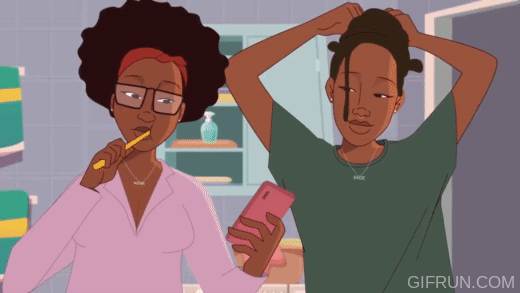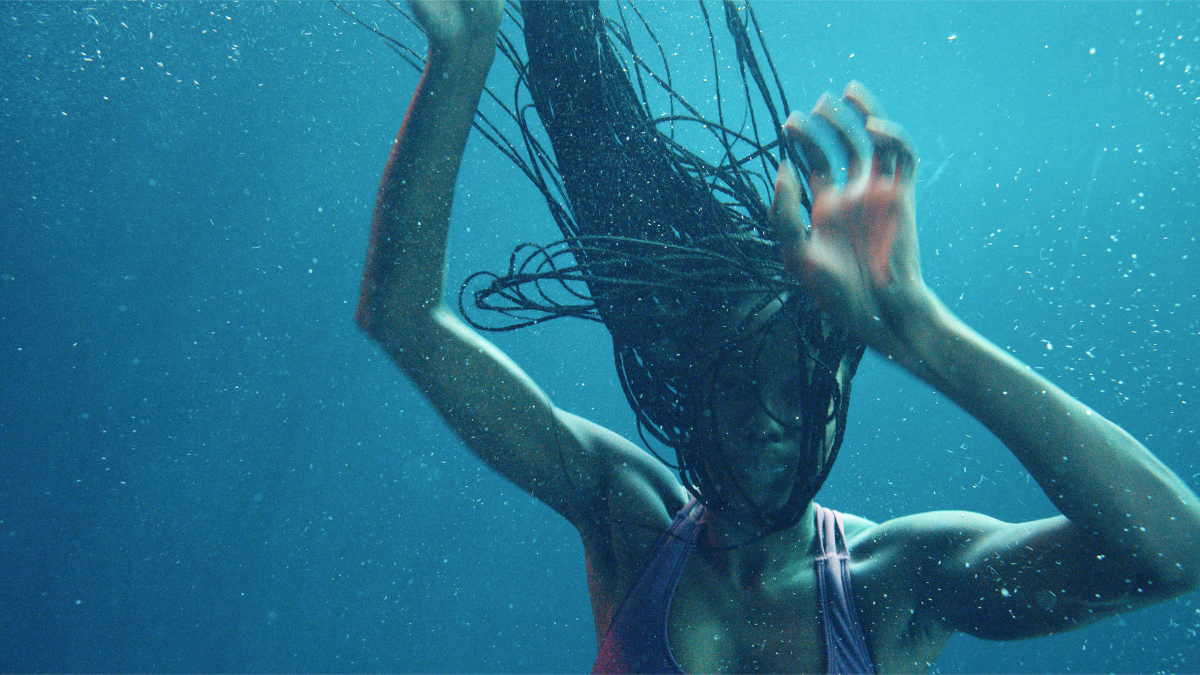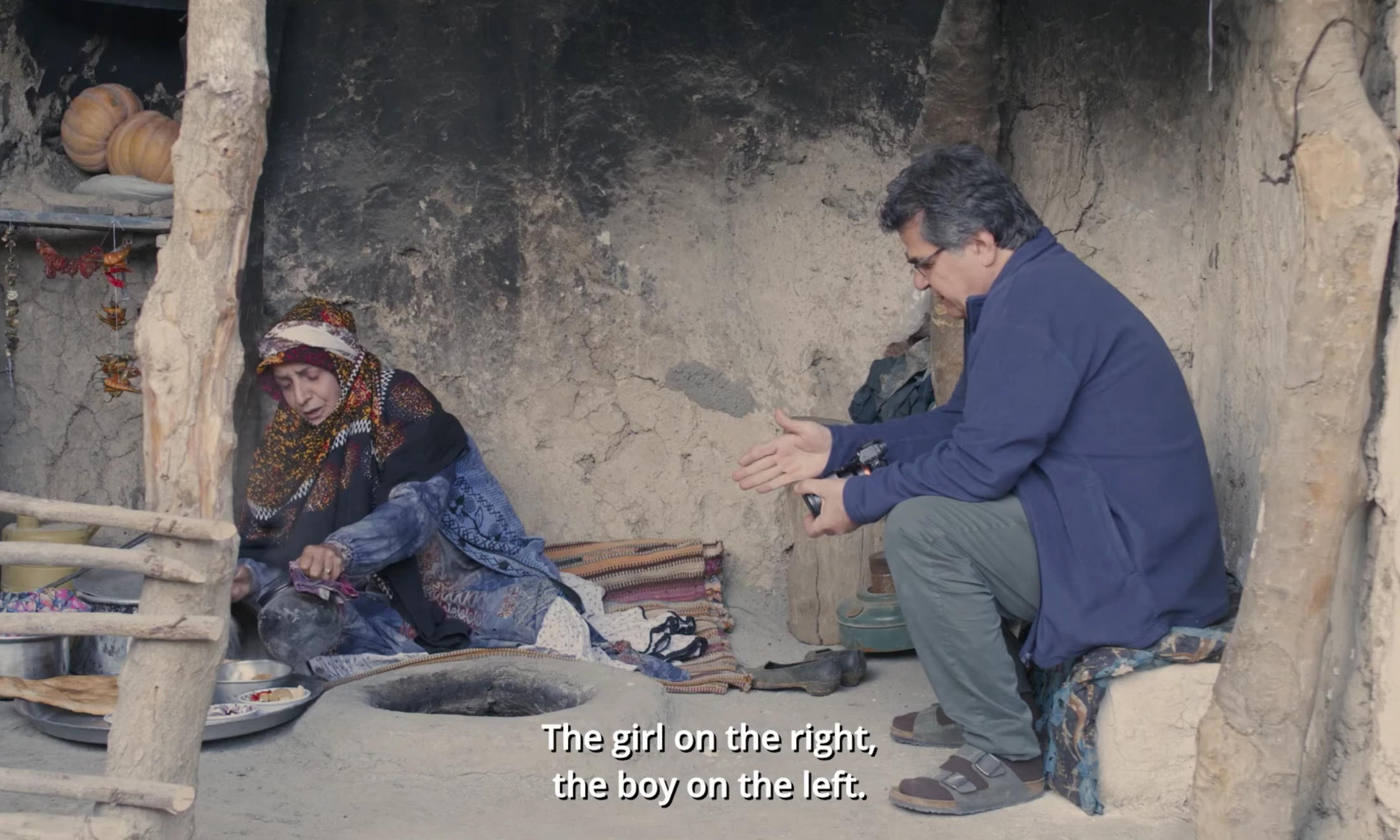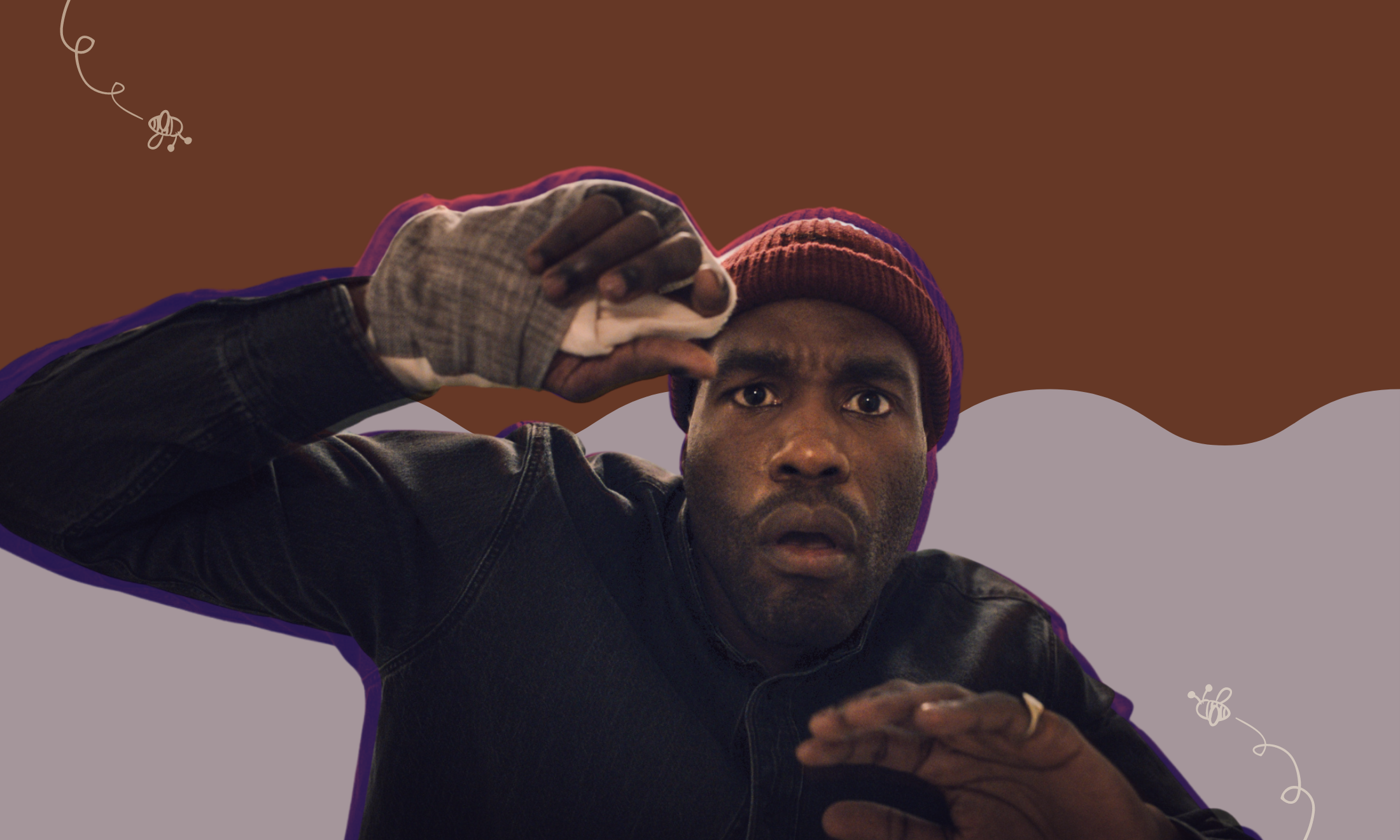
Metro-Goldwyn-Mayer; Monkeypaw Productions; Bron Creative
The new ‘Candyman’, like the black horror genre in general, is having an identity crisis
Nia DaCosta's remake had a lot of promise, but why'd she have to go and make things so complicated?
Kemi Alemoru
02 Sep 2021
There are many positives about the making and reception of Nia DaCosta’s Candyman. Yahya Abdul-Mateen’s beautiful face, a positive representation of a queer couple (who don’t die or experience hardship), and some artistic creepy shadow puppetry – all of the above are delightful. Plus during its opening weekend in late August, it made $22million, making Nia the first black woman to have a top film in the US box office at a time when cinemas are still struggling to get bums on seats for projects that have been backlogged due to Covid-19 restrictions, closures, and fears.
Due to the lack of big-budget black art, its place in history, and the recent success of black horrors, this $25 million juggernaut is important to the film canon. However, it is not without its faults and has ultimately left me (and surely others) feeling conflicted. So my analysis is formatted as a shit sandwich: beginning and ending with the film’s strongest points.
It’s hard not to measure Nia’s film against the original when the two share so many similarities. Billed as a “spiritual sequel”, the film toes the line of retelling the original story and trying to remake it entirely. To understand many of the director’s artistic choices, you have to look back at her reference point. In the chilling 1992 iteration, once Candyman is summoned, he is an inescapable presence. A white academic called Helen Lyle learns that the ghostly killer said to have been behind a recent murder in the Cabrini-Green housing project in Chicago, was Daniel Robitaille, the son of a slave whose talent for painting portraits earned him proximity to wealthy white people who enjoyed his work in the 1800s. However, they lynched him when he fell in love with and impregnated his employer’s daughter. They cut off his right hand and smeared him with honey, watching as bees stung him to death. And so begets centuries of violence of this legend which haunts and terrorises black neighbourhoods. The fact that it’s housing projects who see Candyman’s wrath was a contentious choice that has been critiqued for decades. Perhaps the original’s director Bernard Rose’s tale was a (slightly hamfisted) comment on black-on-black violence in inner cities and through his own white gaze, was exploring how centuries of racism is intimately interlinked with modern-day woes of working-class black struggle.
This Candyman, just like the original 1992 version, is a comment on how black men have been vilified to bogeyman status in America. But the 2021 film’s victims are mostly white, and more importantly, the director, writers and the protagonist aren’t.
Yahya Abdul-Mateen’s Anthony McCoy is a jaded artist searching for inspiration, whose creative spark is ignited when he comes across the urban legend of Candyman and Helen Lyle. Colman Domingo, who plays William Burke, a knowledgeable man from the local laundrette, tells Anthony about a hook-handed man named Sherman Fields, who gave sweets to neighbourhood kids.
“But for all of its efforts to be intelligent and spark conversation, Candyman’s biggest downfall is that it’s a horror film that isn’t very scary”
Gentle (and voiceless) Sherman was beaten to death by police because they believed he was responsible for a crime where a little white girl found razor blades in candy. But it was later discovered that she must have received it from another stranger. After police beat Sherman to death, it turns out the razorblade candy killer must’ve still been at large because more razorblades were found in local kids’ candy (meaning this neighbourhood is riddled not only with Candymen of the horror variety but men who literally dish out candy, which is in itself confusing). After that, it became legend that the spirit of Sherman would return when you said “Candyman” five times in the mirror. As we learned from the 1992 iteration, if you go looking for the mirror-dwelling monster, you’re bound to be haunted by and eventually take your rightful place alongside him in local lore, as Candyman’s MO is to kill and consume to preserve his own legend. Cue Anthony’s bee sting-induced hand rot which makes way for him to lose it and join the hooked brotherhood.
Typical of horrors that Jordan Peele helps create, it’s jam-packed with metaphors that make wider points about society. And fitting with the black horror boom, there’s discourse to dissect afterwards in a bar, in culture articles (hi!) or on social media. But for all of its efforts to be intelligent and spark conversation, Candyman’s biggest downfall is that it’s a horror film that isn’t very scary.

Tony Todd in ‘Candyman’ (1992), Propaganda Films, PolyGram Filmed Entertainment
The lack of a fear factor can be boiled down to overcomplication. By using state-of-the-art CGI in the 2021 version, we get technically impressive visuals, but are robbed of a charismatic killer. Tony Todd’s face from the original has stuck with me since my childhood, as has the goosebump-inducing way he says Helen’s name, which manages to be creepy and sultry simultaneously due to the almost orgasmic deep-but-breathy tone of his voice. Between his dashing good looks, the cheeky glint in his eye, his fur coat and that scene where he opens up his coat to reveal a ribcage full of bees, Candyman as a tangible entity is the reason the legend lives on. A bogeyman with real chutzpah, a nightmarish Babylon bandit. When people die in Nia DaCosta’s Candyman, you see phantom slashes from an invisible hook. It does not have the same impact as having more shots of a visible killer to fear.
“At no point does Sherman appear threatening or say anything memorable, so he isn’t scary when he’s in view and even less so when he is invisible”
This isn’t particularly novel – Nightmare on Elm Street has death scenes where bodies move and blood spills without any physical assailant being visible to confused onlookers. But they’re spliced with clips from inside the victim’s dreams where Freddy Krueger is terrorising them. Freddy makes quips and always sounds like he’s on the verge of a sinister chuckle. His knife hands and maimed face are unforgettable, and he’s a pervert. There are reasons to fear him. However, at no point does Sherman appear threatening or say anything memorable, so he isn’t scary when he’s in view and even less so when he is invisible.
Of course, Sherman’s timidness could be an intentional comment on how the bogeyman of the big black man is actually built on fallacy and that these figures are actually victims. This conclusion remains salient when William tells Anthony: “Candyman ain’t a he. Candyman’s the whole damn hive.” But by robbing Candyman of a solid identity, it makes the hive reference a bit confusing (if Candyman is not Daniel Robitaille who was stung to death, then the recurring symbolism of bees is weakened, he needn’t even have a hook necessarily).
“Nia’s Candyman plays on white people’s greatest fear: that black people might actually want revenge for how they’ve been treated historically”
To try and set her tale apart, Nia DaCosta makes Candyman a legendary monster emblematic of the rage that lives on after such injustices. He’s a destructive force created by white violence. Nia’s Candyman plays on white people’s greatest fear: that black people might actually want revenge for how they’ve been treated historically. The use of mirrors forces us to reflect on the person looking into it. When racist white people call on Candyman, Nia is saying the real monster is them and their deaths are a result of the trauma they inflict. When a black person calls on Candyman, it is to alleviate their own trauma because they can basically use him as a hitman, as if white supremacy leaves us with little choice but to unleash the beast.
But what this all fur and no knickers remake has in snazzy CGI scenes and complex plotlines, it lacks in jump scares. Without fright, we’re left to look for scares in the themes within it, but they don’t hold up well under scrutiny. At times the film touches upon the redevelopment of black neighbourhoods as the annoying white art critic Finley essentially questions whether Anthony, a black artist, is just as potent a gentrifying force to Cabrini-Green as middle-class white people, despite the fact that Anthony grew up in a housing project. Although Jay Z might love this part as he wants us to gentrify our own neighbourhoods, there’s no real exploration into the real power imbalances that would obviously absolve Anthony of Finley’s accusation.
Candyman doesn’t just follow in the footsteps of its predecessor, but of another film that was released this year: Malcolm and Marie which sets a meta trap for reviewers and those in the cultural sphere who try to make sense of the plot. Sam Levinson’s black-and-white film starred Zendaya as Marie alongside John David Washington, who plays Malcolm, a writer and director. In the film, Malcolm decries how white culture writers gatekeep the sort of black stories we see with their eagerness to dissect trauma and race in every story that has non-white characters.
Similarly, Finley is far more interested once she can link Anthony’s work to fresh trauma due to the murders that take place at his exhibit. He tells her: “You love what we make but not us”. The first victims of Candyman in the film are a couple so tantalized by black pain they use Anthony’s work as a backdrop for their foreplay in the art gallery before they’re brutally murdered. Even black people working within the art world seem to be interested in Anthony’s art curator girlfriend Brianna based on her past and current pain rather than her merit. The art Anthony initially creates is driven by passion and is initially visceral (Briana criticises his “literal approach”) so he shrouds his feelings in metaphor, packaging it in a way the white art world can play around with interpreting it at length.
I wonder if this contradiction is how the hotly anticipated remake of the 1990s cult horror came to tie itself in knots unnecessarily to tell the legend of Candyman for a new generation, who are already primed to see social commentary in black horror in a way that the original audiences weren’t. It tries to market itself to a discourse-minded audience without fully being able to articulate the story it’s trying to tell. Candyman weaves in references to Black Lives Matter phrases with the spine-chilling “say my name” refrain used for promotional posters and within the trailer in the remix of the Destiny’s Child classic. The film has clearly been made to cash in on the black horror boom, which is extremely lucrative right now, and appeal to a political audience by making links to social justice movements.
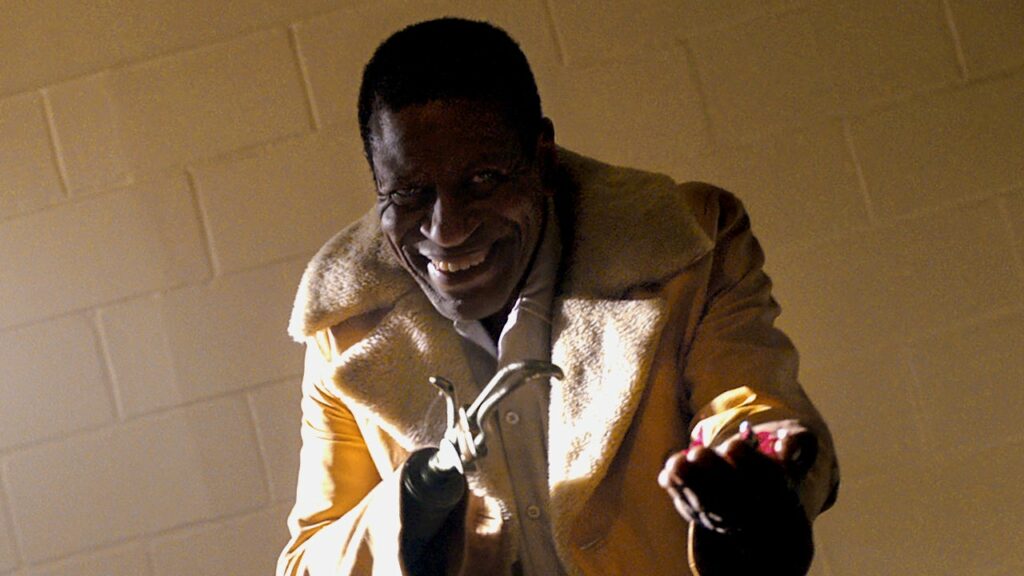
In many ways, Nia is unable to escape the trap she and Sam Levinson are trying to critique. She is funnelling her own art through the same lens using black deaths as the hook and lifeblood of the marketability of the film. Perhaps the unravelling of William from the laundrette in the final act is her final rebellion. He becomes one of the film’s biggest shocks as he saws off Anthony’s hand to create his ultimate Candyman, one that can be remembered as a symbolism of vengeance rather than victimhood – a far more interesting conclusion for a black horror to reach. It’s less palatable to white art critics to applaud a film that is about vengeance towards their community. However, the execution is messy.
“Most horror audiences are content with a psychopath with a weapon and a grudge, rather than feeling like they have to bring a pen and paper to extrapolate the true meaning of the film”
There are plot holes so distracting that it minimises your enjoyment of the project. For a film this complex we need more information. Or, the story could have been simplified while Nia just amped up the gore and suspense. Because really, most horror audiences are content with a psychopath with a weapon and a grudge, rather than feeling like they have to bring a pen and paper to extrapolate the true meaning of the film. By failing at communicating deeper meanings and at building terror this film manages to do too much and too little at the same time. But as we reach the bottom piece of bread on this shit sandwich, it’s still important to note that the film still illustrates the scope and potential of this corner of horror.
Thankfully, Candyman falls short of crudely traumatising black audiences with violence towards black bodies (as seen in other recently released black horrors like Amazon’s Them) via its choice of victims. By priming you to mistrust any white character on screen, race horrors are rewiring media tropes and ripping up the prejudices Hollywood cinema has spoonfed viewers over time, where black people have so often been cast as a threat. Racists are punished for their ills by whacky deaths which makes for cathartic viewing in current circumstances. In Candyman’s context, snooty gatekeepers in the art world or racist policemen get their comeuppance. As do bitchy high school girls who make fun of black nerds at school (if you’re mean to black people in this film, you die). Much of the potency of the genre comes from recurring tropes: a pulse-raising score, playing on society’s fears around the occult, sexual morality and more, or even how the closing of a mirror makes you think someone will suddenly appear out of nowhere. We’re watching the development of a new film lexicon in real time and while there are some misfires, there’s definitely still some very interesting ideas.
Something is haunting this film and it’s not a Candyman; it’s the spectre of black horror’s adolescence. It’s a fertile genre at a crossroads, as some critics question the validity of using black trauma as a marketing device to pull in viewers (especially white audiences). Get Out and the rest of Jordan Peele’s subsequent horror film and TV projects has proved there’s an appetite for these stories, but in a rush to replicate that success, newer projects neglect to analyse what it was about that film that worked. You can make a relatively simple film with nods to a political point. These projects needn’t feel like the makers are writing a thesis and throwing the kitchen sink at it to score top grades.
Watch our interview with Nia below:






